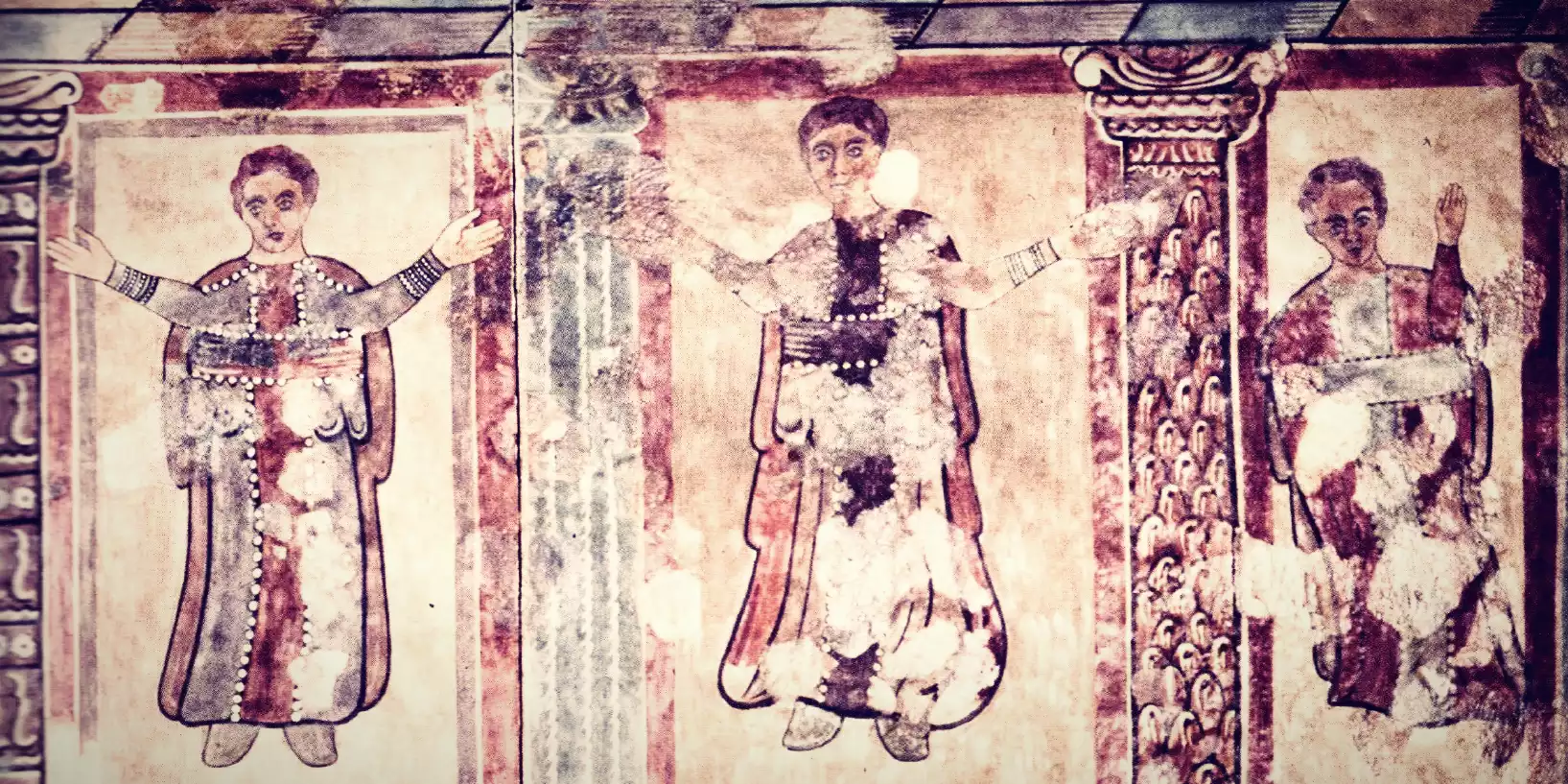
The emergence of early Christian art was a gradual process fueled by the growing acceptance of Christianity in the late Roman empire. As the faith moved from fringe cult to state religion under Constantine in the 4th century CE, Christian imagery and architecture blossomed across the Mediterranean world and beyond. This flowering of creative expression laid the foundation for the rich traditions of Medieval and Byzantine art.
An Emperor’s New Faith: Imperial Patronage and the Flowering of Early Christian Art
What a difference a ruler makes! When Constantine decisively triumphed at the Battle of the Milvian Bridge in 312 CE, ascending to become sole emperor, few could have predicted the monumental ramifications for the future of western art. By championing Christianity, Constantine set in motion a flowering of artistic expression that forever altered the landscape of creative endeavor. This first wave of imperial patronage for the burgeoning faith stimulated innovators to fuse classical styles with new influences from the east, birthing an emergent visual language for this rising religion.
The glittering churches erected by Constantine’s architects throughout his realm signaled a bold new era, their jewel-encrusted opulence and unprecedented scale proclaiming the emperor’s wholehearted embrace of the faith formerly suppressed by his predecessors. Ecclesiastical chroniclers enthusiastically catalogued Constantine’s lavish donations to these resplendent structures, emphasizing items crafted from prodigious amounts of gold and gems. Clearly no expense was spared for the adornment of the emperor’s favored sanctuaries! Although later plundered and lost, accounts describe a massive golden altar for St. Peter’s Basilica, its surface engraved with 400 precious stones. Secular and sacred were conjoined in Constantine’s realm, as demonstrated by new Christian complexes attached to imperial palaces in capital cities such as Constantinople. The artisans of these palatine churches explored inventive iconographies fusing classical and Near Eastern motifs, experimenting with an emerging visual vocabulary appropriate for depicting biblical themes.
As Christianity was hardly monolithic, neither was its artistic expression uniform across Constantine’s far-flung dominions, particularly as one journeyed further from the empire’s cosmopolitan urban centers where Greco-Roman classicism still reigned supreme. In the western provinces like Roman Britain, one sees delightful fusions of style at rural church sites like Lullingstone Villa. Here Christian frescoes merge Eastern elements like stacked hands lifted in liturgical prayer with Western Realism to portray elaborately clad holy personages, quite possibly the villa owners and their household pictured as prototypical saints. By sanctioning previously forbidden forms of worship, Constantine’s ascent unleashed an upwelling of creativity from Iberia to Palestine as novel visual interpretations bloomed. This vibrant diversity underscores early Christianity’s remarkable fecundity during the late imperial centuries. From this explosive origination, the manifold streams of early Christian art began coursing towards the sea of the European Middle Ages, destined to shape kingdoms yet unborn.
Twilight of Empire: The Ongoing Evolution of Early Christian Art
As the once-mighty Roman empire steadily unraveled during the 5th century CE, subject to barbarian invasions and internecine struggles, early Christian art continued its gradual transformation across these turbulent dominions. While the imperial court still glimmered far away in Constantinople, the western provinces witnessed escalating instability that stimulated both continuity and change in emerging artistic schools. As civic infrastructure crumbled, cathedrals often endured as islands of stability under the shielding aegis of bishoprics. Sheltering within fortress-like walls, these ecclesiastical centers sustained active workshops of artisans and scribes, guardians of culture amidst the tempests of invasion and migration.
Trends in iconography and ornament demonstrate the complex intermingling of old and new that characterized this protean age of transition. For example, the glittering treasure hoards buried for safekeeping by the last Romans in Britain include lavish silver repoussé works fusing both pagan and Christian themes, like the late 4th century Water Newton assemblage. Such hoards represent almost time capsules of cultural convergence, melding Mithraic zodiac symbols, Bacchic masks, and Chi Rho monograms into harmonious coexistence. Meanwhile, safely ensconced behind the red rock walls of St. Catherine’s monastery on Mount Sinai, sheltered artisans continued to carve decorative Egyptian river motifs on ceiling beams, thus perpetuating an artistic lineage stretching back to the age of the pharaohs. Through such subtle syncretisms, the vital stream of Greco-Roman visual heritage survived to resurface centuries later as bequeathed bounty for successor cultures across Europe.
Even as the Roman era waned in the West, Constantine’s glorious capital endured as the pulsing heart of the Byzantine East. Here ancient traditions persisted, nurturing new iterations of imperial patronage. From this New Rome would emerge fresh currents in Christian expression, destined to shape realms yet unborn.
From its origins in Roman catacombs to the jewel-encrusted basilicas of Constantinople, early Christian art emerged as a revolutionary force that transformed visual culture. As Christianity shook off persecution to become the faith first of an emperor and then an empire, its iconography continuously evolved – incorporating influences from East and West, classical motifs and new experimentation. Despite the later collapse of Roman authority in the West, cathedrals and monasteries provided sanctuaries for this flowering creative tradition. Thus nurtured, early Christian art not only shaped the Medieval era but resonates through centuries of Western expression. Its vibrant inauguration planted the seeds from which Christendom’s rich heritage of imagery grew.
References
Jensen, R. M. (2013). Understanding Early Christian Art. Routledge.
Spier, J., & Fine, S. (2007). Picturing the Bible: The Earliest Christian Art. Yale University Press.
